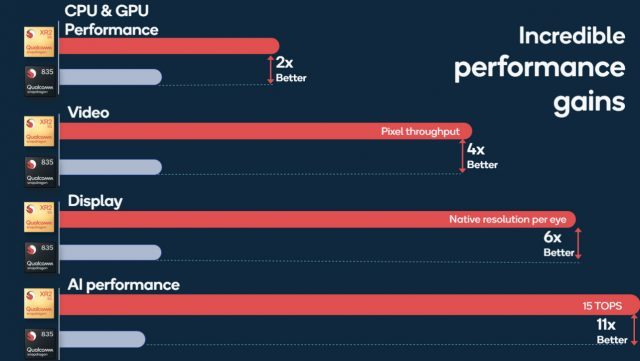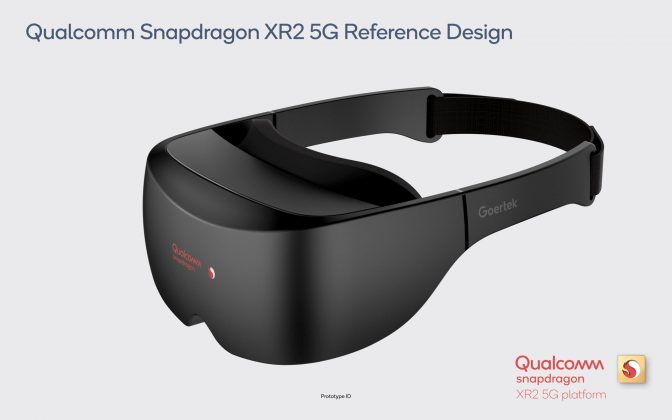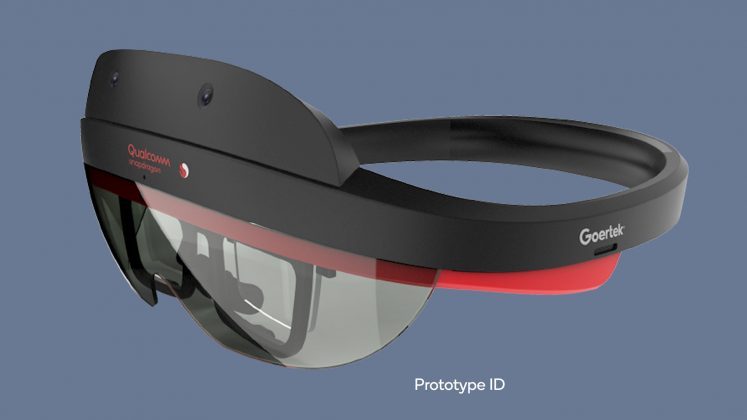
Qualcomm today revealed new reference designs for VR and AR headsets powered by its new Snapdragon XR2 chip. Complete with hand-tracking, magnetic controller tracking, eye-tracking, and more, the Qualcomm reference designs are a glimpse of what’s to come in AR and VR over the next year or two.
Qualcomm has been a quiet enabler of most major standalone AR and VR headsets on the market today. The company has its Snapdragon chips in more than 30 headsets—including major devices like Oculus Quest, Oculus Go, HoloLens 2, and Vive Focus—and it has its fingerprints on many of these headsets through the fruits of its HMD Accelerator Program which provides reference designs that act as blueprints for companies to quickly bring VR and AR headsets to market.
Today the company revealed its latest VR and AR headset reference designs which now include the company’s powerful new Snapdragon XR2 chip. The reference designs give us a clear idea of the specs and capabilities of standalone headsets that we’re likely to see over the next year or two.
The working XR2 reference design, also known as the VRDK, is a larger headset which serves as a testbed for partners to evaluate different features and capabilities. It’s bulky and quite basic looking, for ease of production, but crammed with features for testing.
 Late last year Qualcomm gave us a good idea of the kind of specs and features we could expect to see from VR headsets based on XR2; namely: displays up to 3K × 3K per eye @ 90Hz, integrated 5G connectivity, support for seven simultaneous camera feeds, and significantly more processing power across the board compared to Snapdragon 835 (one of the most common chipsets found in current standalone headsets, including Quest).
Late last year Qualcomm gave us a good idea of the kind of specs and features we could expect to see from VR headsets based on XR2; namely: displays up to 3K × 3K per eye @ 90Hz, integrated 5G connectivity, support for seven simultaneous camera feeds, and significantly more processing power across the board compared to Snapdragon 835 (one of the most common chipsets found in current standalone headsets, including Quest).

The company added today that the XR2 reference design can support controllerless hand-tracking (likely from Ultraleap), Atraxa magnetic controller tracking, and Tobii eye-tracking. While no one headset is likely to include everything, the features exist in the reference design for partners to evaluate and consider for inclusion in future headsets.
Qualcomm also showed off prototype industrial design references (one for VR and one for AR) which offer a glimpse of the kind of form-factors the company believes could be achieved for commercial products based on the XR2 reference design.
Qualcomm is also touting a “comprehensive, end-to-end solution” for cloud-rendered VR delivered over a 5G network. While the company had spoken about the possibility of cloud VR before, this is the first time it’s telling partners that it has all the pieces in place for anyone who wants to attempt to deliver a product built around the concept. Even if it all works in theory, such a device won’t really be feasible until 5G networks and (more importantly) EDGE computing are widely deployed.
The post Qualcomm Reveals New Reference Designs for XR2-powered VR & AR Headsets appeared first on Road to VR.
Ream more: https://www.roadtovr.com/qualcomm-snapdragon-xr2-reference-design-vrdk-vr-ar-headset/


No comments:
Post a Comment